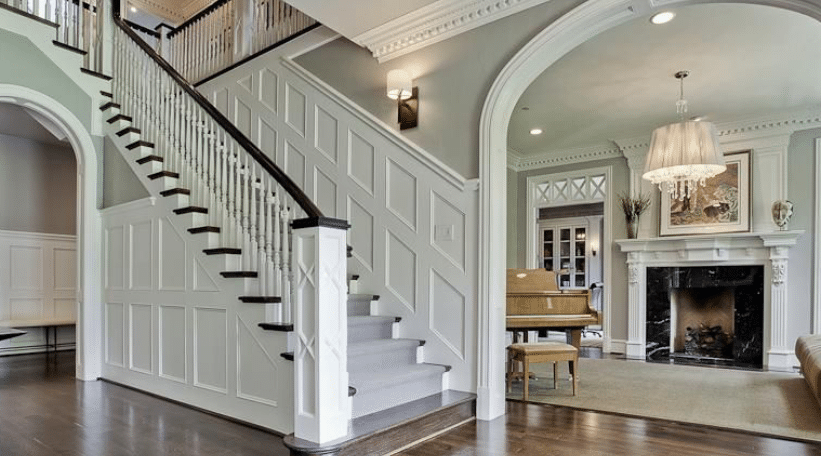Wainscoting adds visual interest to your walls. Here are
various ways you can create the effect.
By Diane Franklin
“Wainscoting” is one of those words that conjure up images of English parlors or formal libraries, but in actually wainscoting is appropriate for many different homes and many different decorating styles.
When people use the term wainscoting, they are generally referring to the wood panels installed at the lower portion of the wall. In addition to wood, there are other materials that can be used for wainscoting, including ceramic or porcelain tiles, paintable textured wallcoverings, embossed metal and Medium Density Fiberboard (MDF) molding.
Wainscoting serves a two-fold purpose, keeping lower walls from being scuffed up, gouged or damaged while also providing a decorative embellishment that gives additional style and personality to a room. It can literally be used in any room of the house—from foyers and living rooms to formal dining rooms and kitchens to bedrooms, bathrooms, laundry rooms and home offices.
Types of Wainscoting
The most common style of wainscoting is raised panel, which is associated with a more traditional or Colonial style of decorating. Other styles include flat panels, popular in the Arts and Crafts or Mission styles of decorating; board and batten, characteristic of Craftsman-style decorating; and beadboard, used in Victorian and cottage style décors. A finishing rail on the top provides a clean separation between the wainscoting and the drywall.
There is no hard-and-fast rule regarding the height of wainscoting. An aesthetically pleasing height is about one-third up the wall, which would be 32 inches for a room with 8-foot ceilings and 36 inches for a room with 9-foot ceilings. However, you also can take this 2-to-1 proportion the other way and go two-thirds up the wall, leaving drywall exposed for the top 32 or 36 inches.
Choose Your Colors
Deciding on your color scheme is really a matter of personal preference. Many times, your wainscoting selection and decorating style will guide you toward the appropriate color choice. For traditional decorating styles in which you are using wainscoting made from real wood, you may want to go with an interior wood stain that is compatible with the decorating style and room being decorated. For more rustic or rural styles, beadboard in light pastel colors is a good look.
White is another popular color for wainscoting because it is so clean-looking and will allow the color you choose for the drywall to really stand out. You can go with a subtle wall color atop the white wainscoting, or you can choose a dramatic one—either will work quite well.
For raised panel wainscoting, another option is a two-tone finish, with the raised portion of the paneling painted in white to let the panels stand out more. However, be careful that this two-tone look does not make your room look too “busy” when and if you introduce a third color for the drywall portion of the room. One solution for this is to use one of the colors used for the wainscoting for the drywall portion of the room as well. To keep things subtler than a full-blown two-tone treatment of the wainscoting, you can opt instead to take a little metallic glaze and rub it gently along the raised portions of the panel to create a pleasing sheen.
If you decide to go with a more dramatic color for the wainscoting, then choose a lighter, subtle color for the drywall. Having two dramatic colors fight each other will present sensory overload.
Achieving the Look
There are many online and print resources you can consult to ensure that you install your wainscoting properly—or you can hire a remodeling company to do the work for you. The addition of this element is well worth the effort. Done well, wainscoting will add a nice decorative embellishment to the room.

 Interior Paints
Interior Paints Exterior Paints
Exterior Paints Primers
Primers Stains & Clears
Stains & Clears Paint Brushes
Paint Brushes
